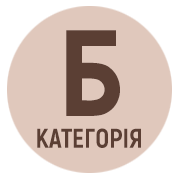FORMATION AND MINERAL COMPOSITION OF THE URZUF PLACER (AZOV SEA)
DOI:
https://doi.org/10.30970/vgl.39.03Keywords:
Azov Sea, Urzuf, Babakh Tarama, placers, ilmenite, conditions of formation, mineral compositionAbstract
Within the Urzuf alluvial deposit (Donetsk Oblast), ilmenite placers are formed in coastal-marine conditions and on the beach along the entire Azov Sea coast between the settlements of Urzuf and Babakh Tarama. Of practical interest are presented of ilmenite (in quantities ranging from a few kilograms to several tens of kilograms per cubic meter of sand) and monazite. The degree of alteration of ilmenite is insignificant, the content of TiO2 – 44,79–64,85 %. Monazite belongs to the cerium species (the content of Се2О3 ~20 %). La is presented together with cerium in a ratio of about 1:2. The placers formation was studied during several field seasons with sampling of ore sediments. The mineral composition was studied using binocular and electron microscopes. In different parts of the beach, the placers contain sand-gravel-pebble, sand-detritus, gravel- sand, sand, and sandy-clay deposits. The leading role in the formation of coastal-marine placers belongs to coastal water flows, storms and seabed irregularities, while the main role in the formation of beach placers belongs to coastal water flows, water waves, storms, and winds. From the beach of the Zamok boarding house towards the village of Babakh-Tarama, abrasive and landslide processes play a significant role in the formation of placers, which causes the change of ore-bearing sandy deposits to sandy clay deposits. On this section of the beach, placers form two bands of lateral enrichment of the beach with ilmenite: in the wave surf zone and near the shoreline. Based on the results of the mineral composition of the beach sands, the following minerals were diagnosed: rutile, ilmenite, quartz, garnet (almandine), zircon, staurolite, cordierite, albite, feldspar, glauconite, pyemonite, muscovite, apatite, and monazite. The analysis of the mineral composition of ore-bearing sediments indicates the presence of several sources of terrigenous material supply to the placer.
References
Ганжа О., Ковальчук М., Бельський В. Мінералогія піщаних відкладів північно–східної ділянки Азовського моря. Стан, проблеми і перспективи розвитку мінералогічної науки та освіти в Україні : Матеріали Тринадцятих наукових читань імені академіка Євгена Лазаренка. Відп. ред. М. Павлунь. Львів : ЛНУ імені Івана Франка, 2024. С. 43–47.
Ковальчук М. С. Пляжні розсипи ільменіту на узбережжі Азовського моря (с. Урзуф). Зб. наук. праць Ін-ту геол. наук НАН України, 5, 2012. С. 209–212.
Непша О. В. Про будову кіс Північного Приазов’я. Геол. журн. №3, 2013. С. 44–50.
Непша О. В. Надходження теригенного матеріалу внаслідок абразії кліфів та морського дна як фактор стабільності акумулятивних утворень Північного Приазов’я. Геол.-мінерал. вісн. Криворізького нац. ун-ту, 3 (37), 2017. С. 32–41.
Північно-Західне Приазов’я: геологія, геоморфологія, геологогеоморфологічні процеси, геоекологічний стан : монографія / Л. М. Даценко та ін. Мелітополь : Вид. Мелітопольського державного педагогічного університету, 2014. 308 с.
Савич–Заблоцький К. Н. Ільменітові піски з північного узбережжя Азовського моря. Учені записки Харківського державного університету. Кн. 10, 1937. С. 173–181.
Perks C., Mudd G. Titanium, zirconium resources and production: A state of the art literature review. Ore Geology Reviews, 107, 2019. Р. 629–646. https://doi.org/10.1016/j.oregeorev.2019.02.025








